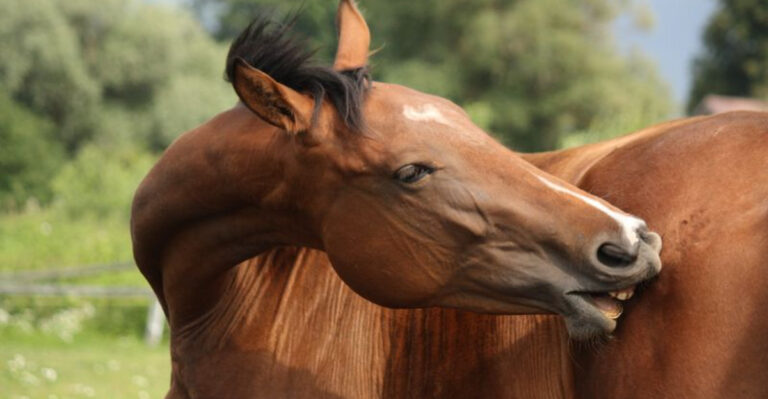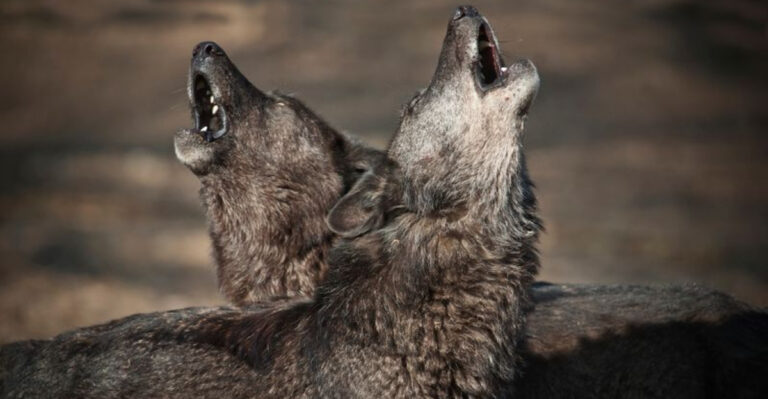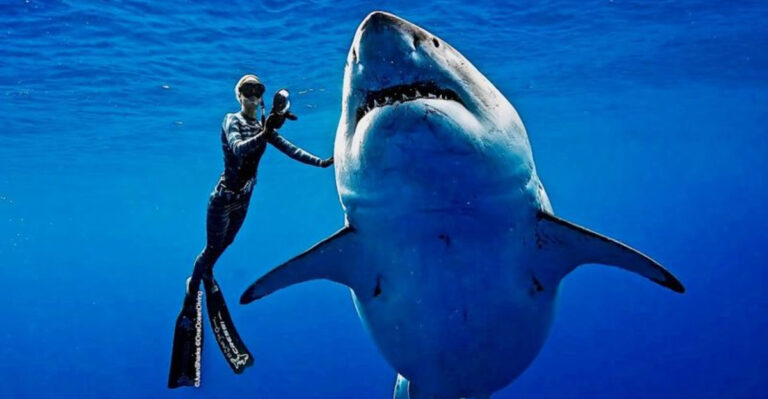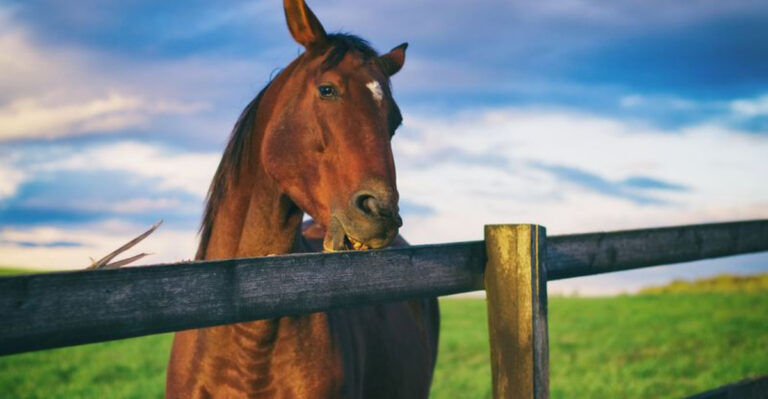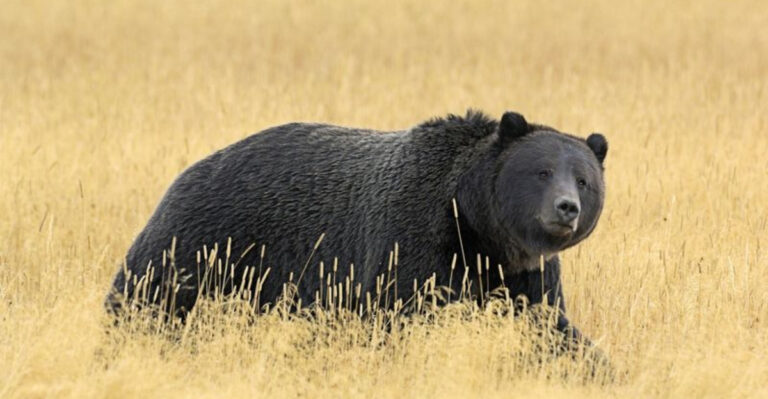10 Little-Known Predators That Keep U.S. Ecosystems In Check
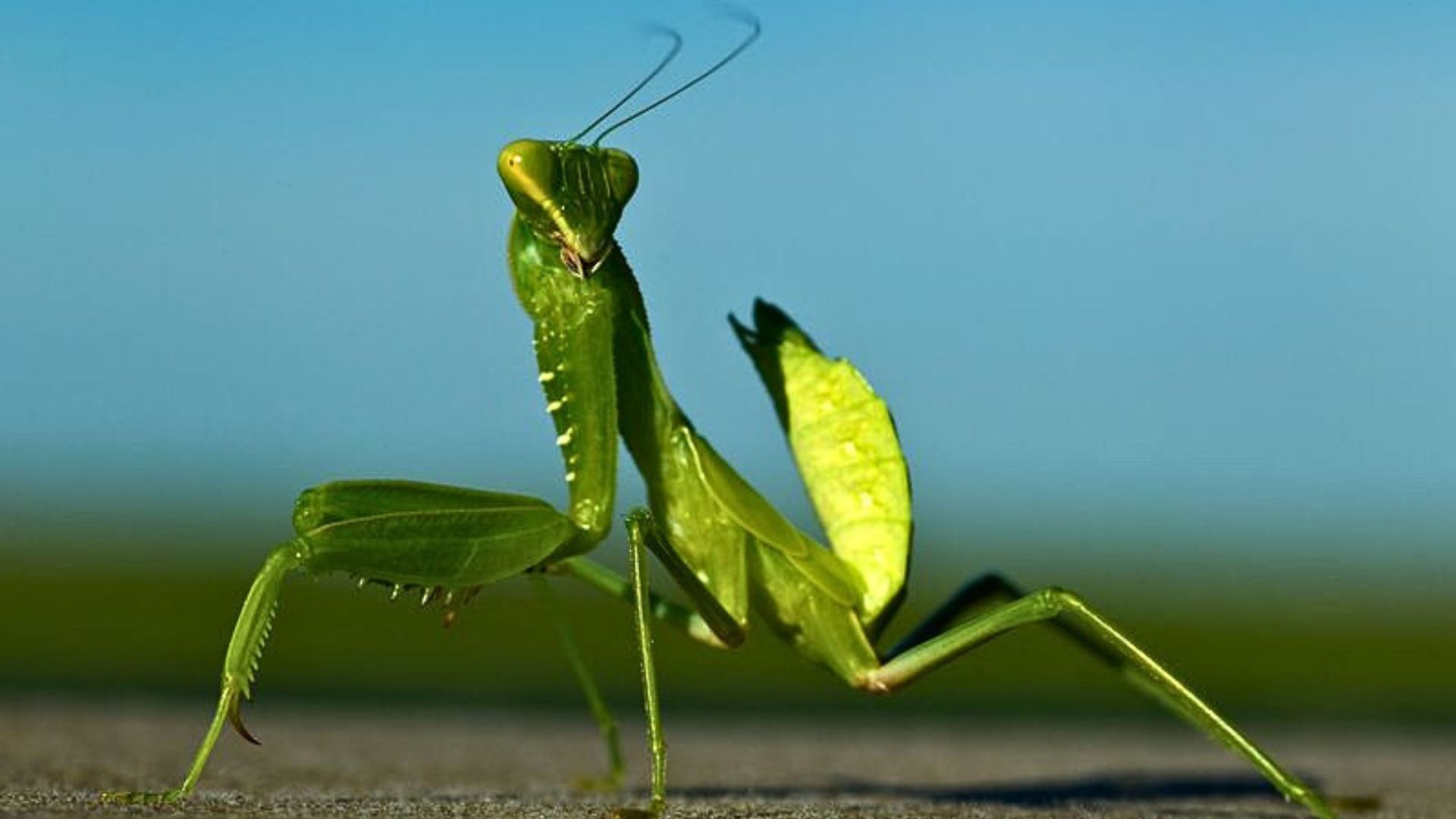
Predators are vital to maintaining the balance of ecosystems.
While many are familiar with the big predators like wolves and bears, there’s a whole world of lesser-known hunters that play equally important roles in keeping nature’s intricacies seamless.
From the aerial pursuits of the dragonflies to the nocturnal hunts of the barn owl, these predators go unnoticed yet are indispensable to the environments they inhabit.
1. Barn Owl
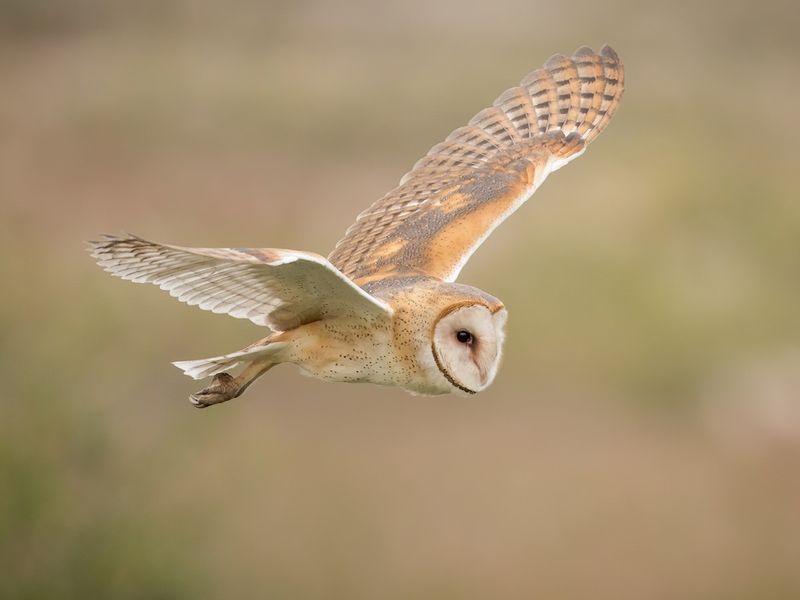
The barn owl, often heard before seen, is a silent hunter of the night. With its heart-shaped face and keen hearing, it silently listens for the rustle of small mammals in the dark. Its wings allow it to glide noiselessly through the night, swooping down on unsuspecting prey with precision.
These owls are particularly known for their role in controlling rodent populations. On farms, they serve as a natural pest control, reducing the need for harmful rodenticides. Barn owls consume large numbers of mice and voles, which helps protect crops and stored produce.
Without barn owls, rodent populations could spiral out of control, leading to significant agricultural damage and economic loss. Their presence ensures a balanced ecosystem, benefiting farmers and wildlife alike.
The barn owl’s role is so vital that some farmers even encourage their presence by setting up nest boxes.
2. Dragonfly
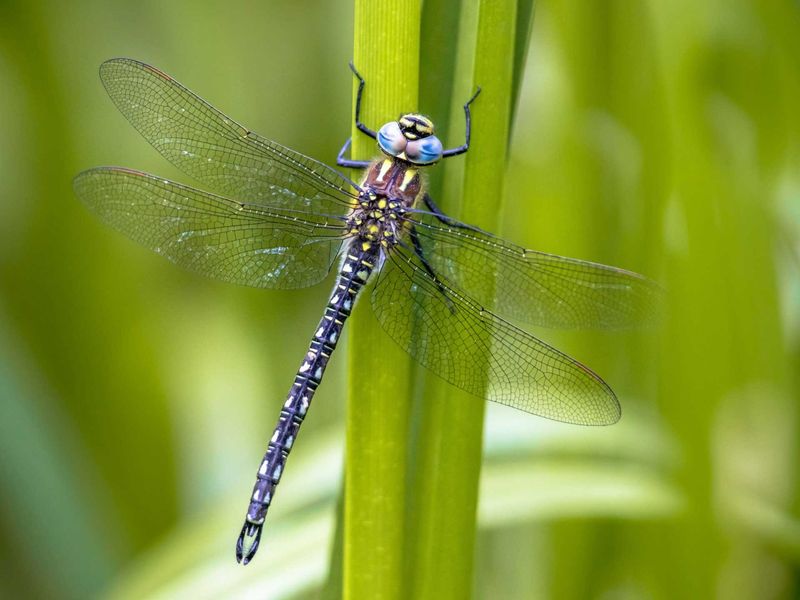
Dragonflies might appear delicate, yet they are formidable predators in their world.
With exceptional flying skills, dragonflies zigzag through the air, snatching mosquitoes, flies, and other small insects mid-flight. This makes them crucial in controlling pest populations around water bodies.
Their lifecycle also contributes to their predatory prowess. As nymphs, dragonflies live underwater, preying on aquatic insects and even small fish. This dual stage of life ensures they impact both water and air ecosystems.
By keeping insect populations in check, dragonflies support the balance of local ecosystems. They reduce the spread of diseases like malaria and dengue fever by consuming large numbers of mosquitoes.
Their presence near ponds and wetlands is a sign of a healthy environment, making them indispensable to U.S. ecosystems.
3. American Mink
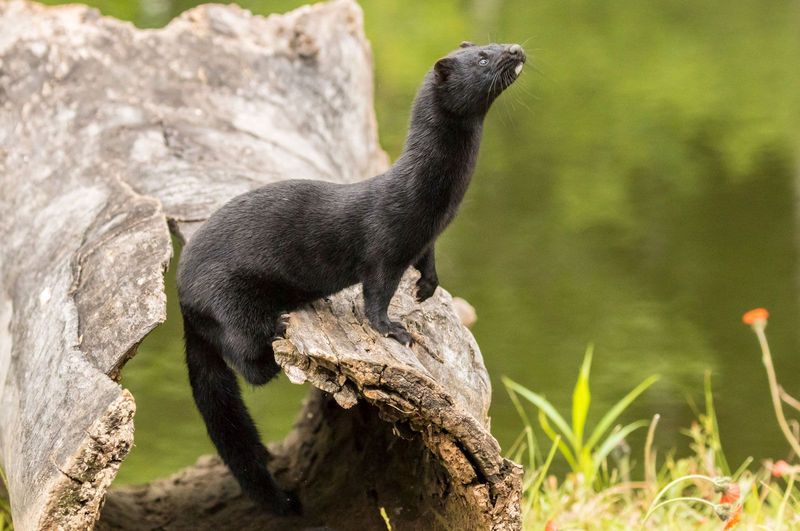
The American mink, with its sleek body and sharp gaze, is a small yet fierce predator. Found near water bodies, it hunts a variety of prey, from fish and frogs to small mammals and birds. Its semiaquatic nature allows it to swim and dive, catching prey both on land and in water.
Minks play a vital role in controlling populations of fish and small mammals. This balance prevents overpopulation that could otherwise lead to vegetation damage and water pollution. By preying on various species, minks help maintain the ecological equilibrium.
In addition to controlling prey populations, minks also serve as indicators of environmental health. Their presence suggests a clean, unpolluted habitat, as they rely on healthy water systems. Protecting this predator is vital for sustaining balanced ecosystems in U.S. waterways.
4. Loggerhead Shrike
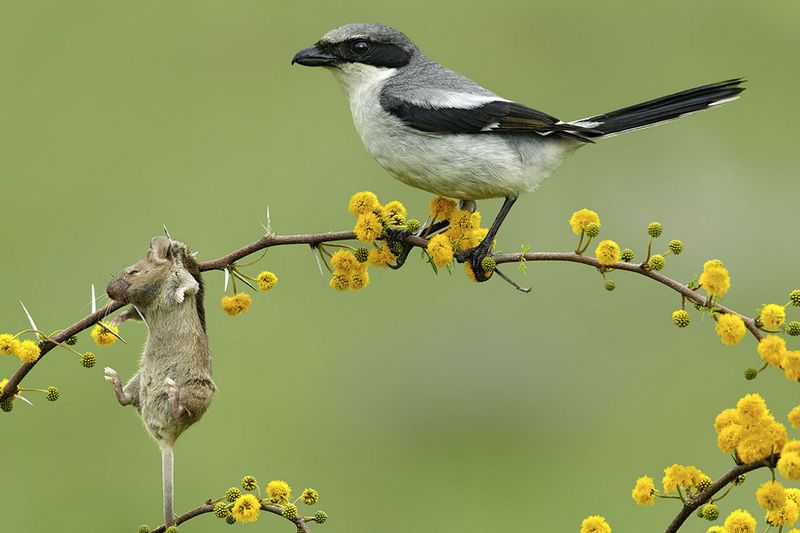
The loggerhead shrike is a songbird with a surprising predatory twist. Unlike many of its feathered friends, this bird has a penchant for hunting insects, small mammals, and even other birds.
What sets it apart is its unique method of impaling prey on thorns or barbed wire, earning it the nickname ‘butcher bird.’ This hunting strategy not only allows the shrike to store food but also to tackle prey larger than itself.
By hunting a range of species, shrikes help control pest populations, contributing to the health of grassland ecosystems. Their presence is essential for maintaining the balance of insect and small vertebrate numbers.
The loggerhead shrike’s role in the ecosystem showcases the diverse strategies used by nature’s predators.
5. Praying Mantis
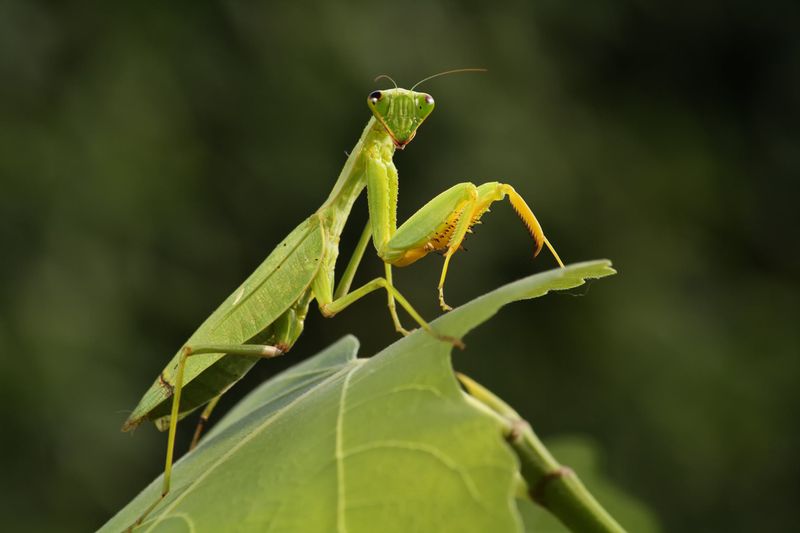
The praying mantis, with its iconic stance and swift movements, is a garden’s unsung hero. Known for its voracious appetite, this predator feeds on insects that are often pests to crops and ornamental plants.
Mantises are masters of camouflage, blending into their surroundings to ambush prey. Their sharp reflexes and powerful forelegs make them efficient hunters, capable of catching flies, beetles, and even small vertebrates.
By controlling insect populations, praying mantises play a vital role in maintaining healthy gardens and natural spaces. Their presence reduces the need for chemical pesticides, promoting eco-friendly gardening practices.
Encouraging mantises in gardens supports a balanced ecosystem where plants and animals thrive.
6. American Kestrel
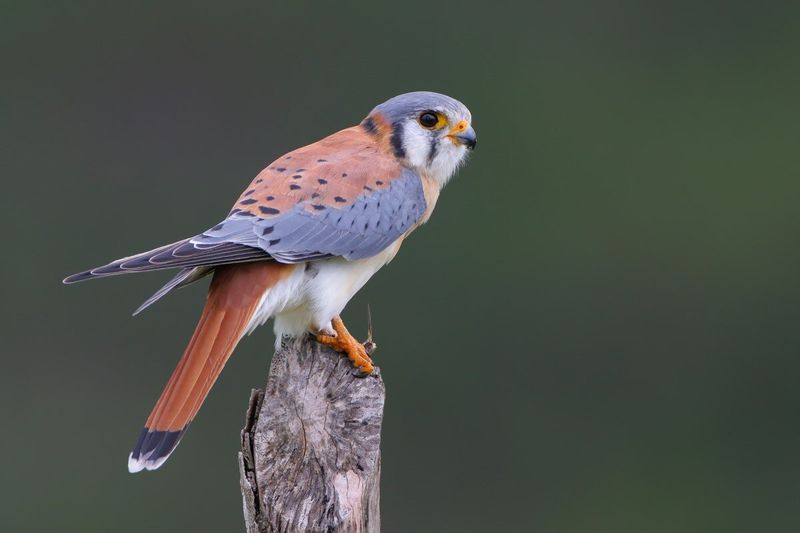
The American kestrel, though small, is a mighty raptor known for its hunting prowess. With keen eyesight and agile flying abilities, kestrels hunt insects, small mammals, and birds, playing a crucial role in regulating these populations.
Kestrels are unique for their ability to hover in mid-air, which helps them spot prey on the ground. This technique allows them to hunt efficiently in open habitats like grasslands and fields, where they are often seen perched on power lines.
Their presence ensures that pest populations remain manageable, benefiting agricultural lands. By keeping small animal numbers in check, kestrels contribute to the ecological equilibrium of their habitats.
These birds demonstrate how even small predators are essential components of healthy ecosystems.
7. Spotted Skunk
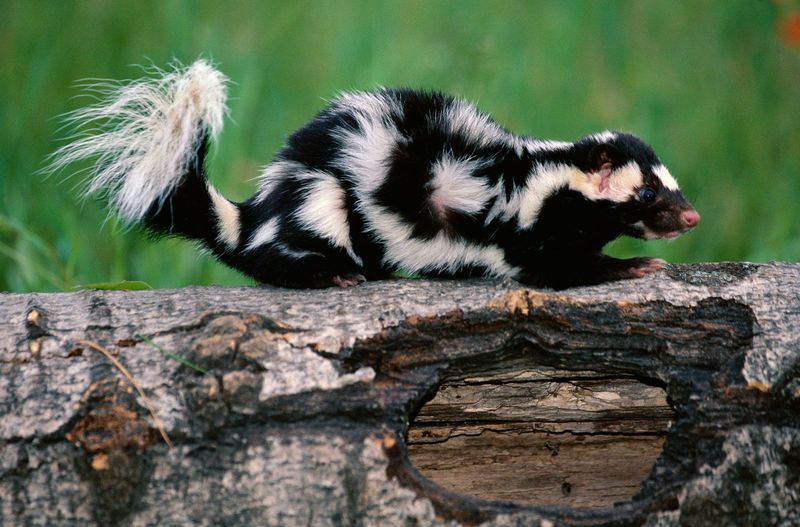
The spotted skunk, smaller than its striped cousin, is a nimble and effective predator. It spends its nights foraging for insects, small mammals, and even amphibians.
Known for its acrobatic abilities, the spotted skunk can climb trees to access food others might miss.
By preying on insects and rodents, spotted skunks help control these populations, reducing crop damage and spreading diseases. Their diet makes them beneficial for farmers and natural ecosystems alike.
In addition to their predatory role, these skunks are known for their unique defense mechanism – a handstand spray warning.
This behavior deters larger predators, allowing them to safely maintain their ecological role. Protecting spotted skunks ensures the continuation of their contributions to U.S. wildlife.
8. Peregrine Falcon
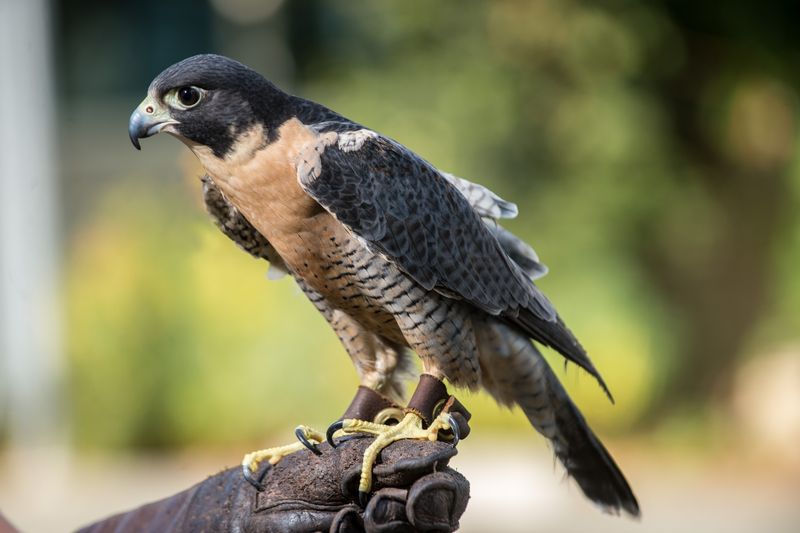
The peregrine falcon is renowned for its speed, being the fastest animal on Earth. This bird of prey hunts medium-sized birds with astonishing dives, reaching speeds of over 240 mph. Its presence in urban and rural landscapes alike helps control bird populations.
Falcons are particularly important in cities, where they hunt pigeons and starlings that can become pests. By keeping these populations under control, peregrine falcons help reduce the spread of diseases associated with large bird flocks.
Their successful reintroduction into cities showcases how adaptable predators can thrive in human-altered environments. The peregrine falcon is a testament to the profound impact a single species can have on maintaining ecological balance.
9. Timber Rattlesnake
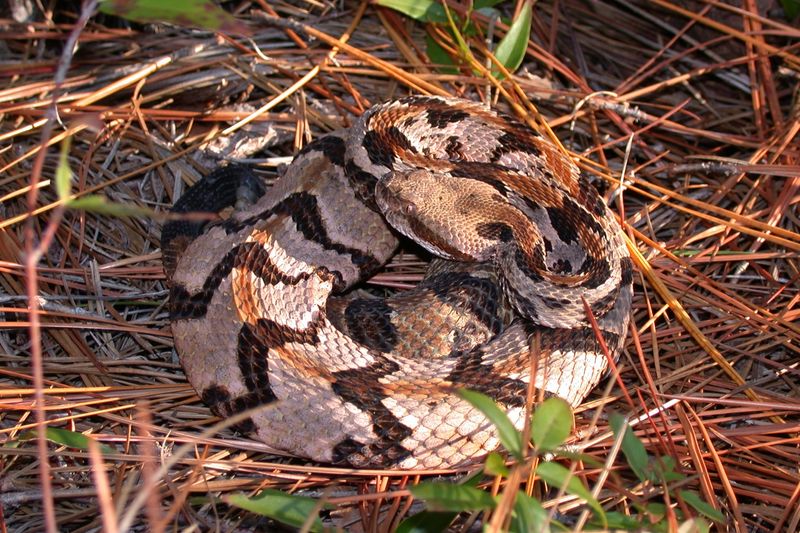
The timber rattlesnake, often misunderstood, plays a crucial role in its ecosystem. As a predator, it primarily feeds on small mammals, particularly rodents, which can be detrimental to crops and property.
Rattlesnakes control rodent populations, which in turn helps prevent the spread of diseases like hantavirus. Their presence is an indication of a healthy ecosystem, as they require undisturbed habitats to thrive.
Though often feared, rattlesnakes are generally non-aggressive and avoid human contact. Their role as predators is vital for maintaining the balance between predator and prey, ensuring the ecosystems they inhabit remain healthy and diverse.
10. Red Fox
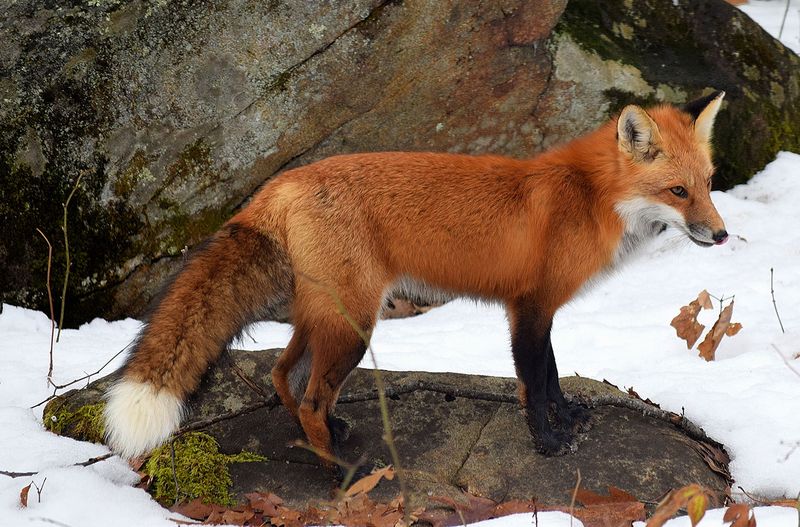
The red fox, with its striking fur and bushy tail, is a versatile and cunning predator. Found across various habitats, from forests to urban areas, foxes feed on rodents, birds, and insects, adapting their diet to the available food sources.
Their ability to thrive in different environments makes them important in controlling pest populations.
Red foxes help reduce the number of rodents and insects, which can otherwise cause significant agricultural damage.
In urban areas, they contribute to controlling small mammal populations, ensuring a balanced ecosystem even in cities.
The red fox’s adaptability and hunting skills highlight the essential role that predators play in sustaining ecological stability.

